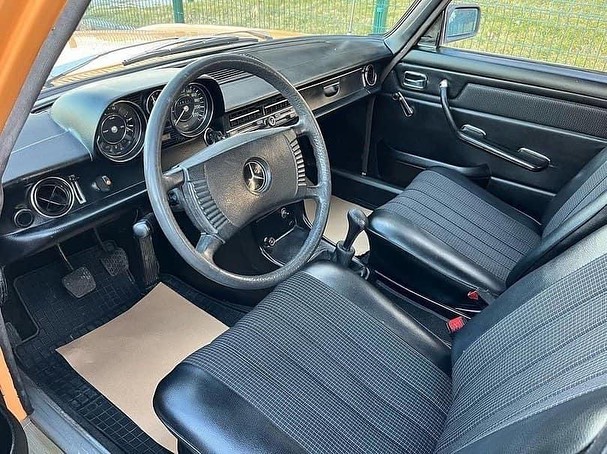General Murtala Muhammed’s Famous Mercedes-Benz 230.6 Death Car
On February 13, 1976, Nigeria was shaken by the assassination of its Head of State, General Murtala Mohammed. The incident, which occurred in Lagos during his morning commute, marked a turning point in the nation’s political history. At the center of this tragic event was the vehicle carrying him: a Mercedes-Benz 230.6. This car, a symbol of prestige and modernity, became forever tied to the memory of that dark day.
The Status of Mercedes-Benz in the 1970s
During the 1970s, Mercedes-Benz vehicles represented the pinnacle of luxury, engineering excellence, and durability. Heads of state, elites, and influential figures worldwide chose these cars for their comfort and understated elegance. In post-colonial Nigeria, a Mercedes-Benz was more than just a car—it was a badge of progress, affluence, and global sophistication.
Why the 230.6 Was a Natural Choice

The Mercedes-Benz 230.6, part of the W115 series, was a fitting choice for a leader like General Murtala Mohammed. Equipped with a 2.3-liter inline-six engine producing 120 horsepower, the 230.6 offered smooth performance. Its tough design and advanced engineering made it a preferred option for leaders who wanted to balance prestige and practicality.
Advanced Safety Features Ahead of Their Time

Safety was a cornerstone of Mercedes-Benz vehicles, and the 230.6 was no exception. It had crumple zones, a rigid passenger cell, and advanced suspension systems for optimum stability. These innovations set it apart from other cars of the era and made it one of the safest vehicles available—a critical factor for high-profile occupants like the General.
A Car of Comfort and Elegance

Inside, the Mercedes-Benz 230.6 combined functionality with luxury. High-quality materials, ergonomic seating, and thoughtful design created an environment of refined comfort. The spacious cabin, fitted with premium finishes, mirrored the sophistication of the era and the high standards expected of a leader’s vehicle.
The Day the 230.6 Entered Nigeria’s History

Despite its engineering perfection, the Mercedes-Benz 230.6 could not shield General Murtala Mohammed from the assassination attempt that ended his life. Ambushed in Lagos by armed assailants, the car became an unwitting witness to a nation’s heartbreak. The tragedy brought to the fore the limitations of technology in the face of human intent and turned the 230.6 into a sad artifact of Nigeria’s history.
The Legacy of the 230.6 in Nigerian History

After the assassination, the Mercedes-Benz 230.6 took on a new symbolic role. It became a reminder of the turbulent period in Nigeria’s political evolution. Today, the car is viewed by many as a historical artifact and is displayed at the National Museum, Lagos.
Timeless Appeal of the Mercedes-Benz 230.6

Beyond its historical significance, the 230.6 remains a sought-after classic among automotive enthusiasts. Collectors admire the W115 series for its exceptional engineering, design, and reputation for durability. The 230.6 is proof of the craftsmanship of an era when vehicles were built to last and inspire.
A Bridge Between the Past and Present

In the end, the Mercedes-Benz 230.6 is more than just a car for Nigeria; it is a living piece of history that tells the story of a leader who sought to shape the nation’s destiny and a tragic moment that changed its course. For car enthusiasts, it represents an era of uncompromising quality and elegance. Preserving this iconic vehicle ensures that its historical and automotive legacies endure for future generations.





